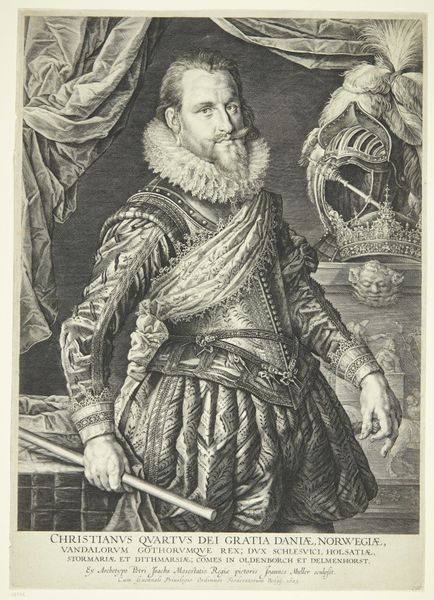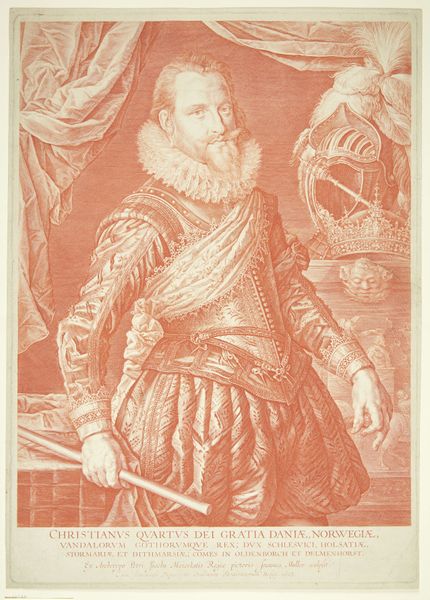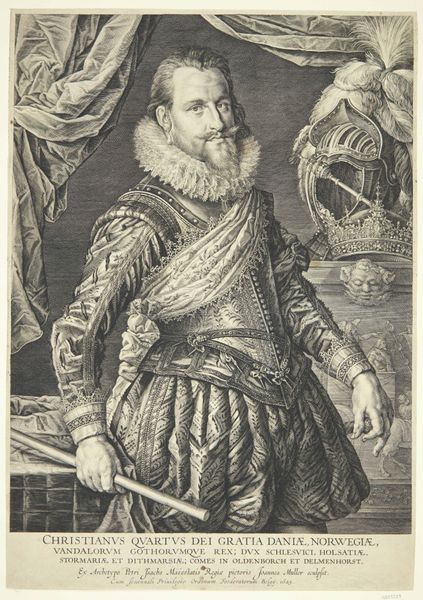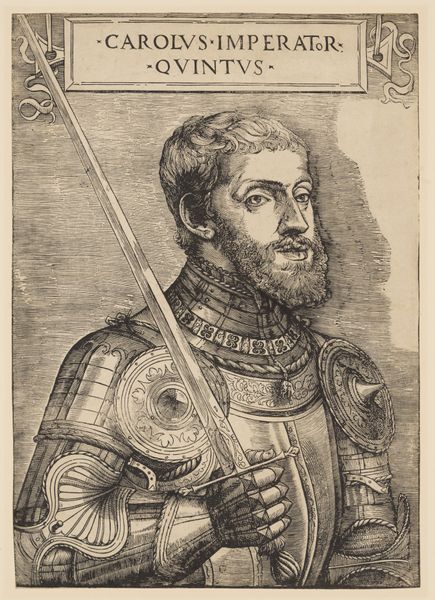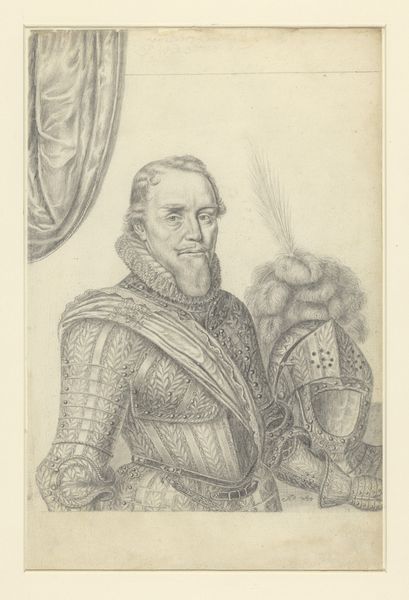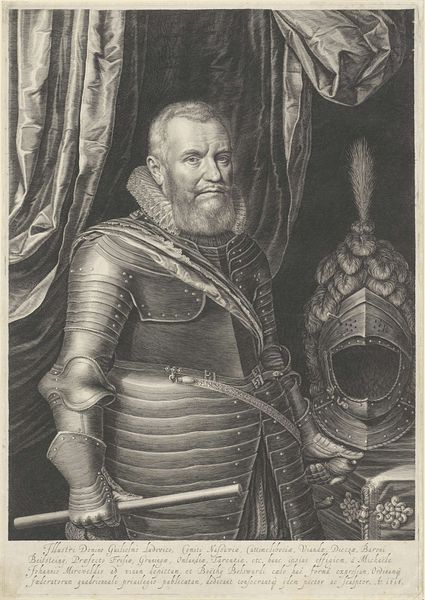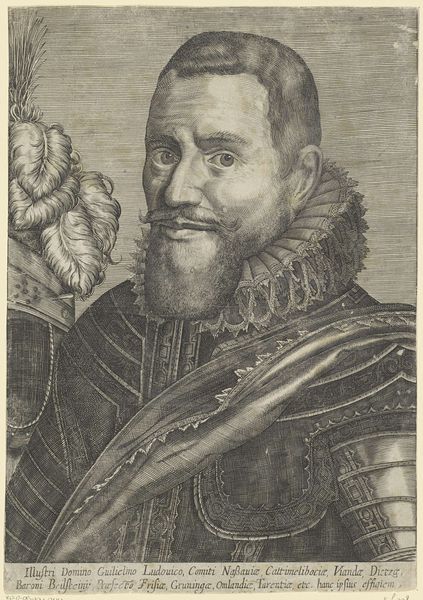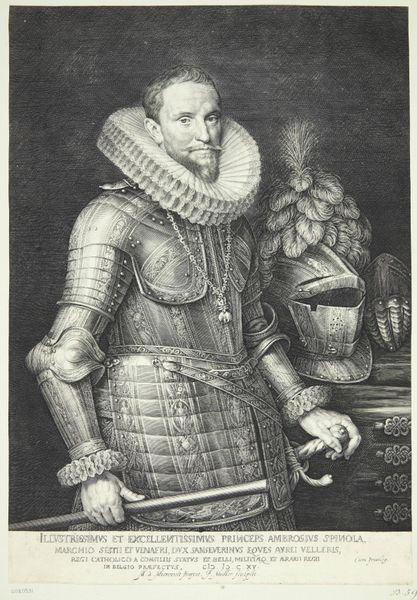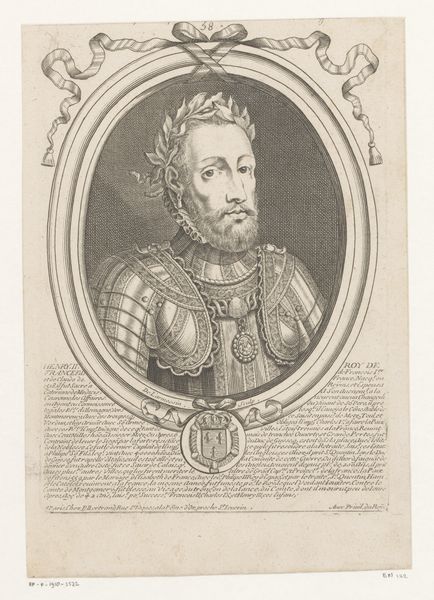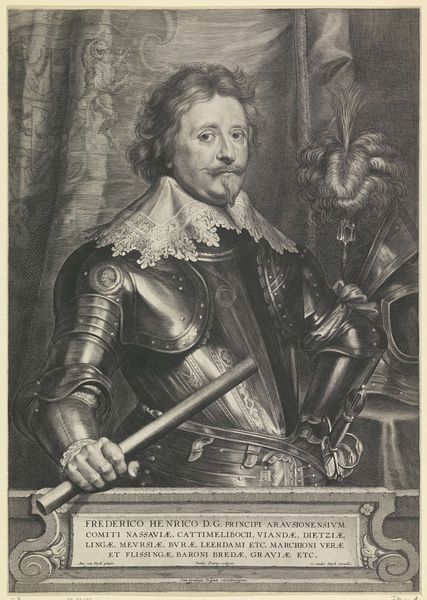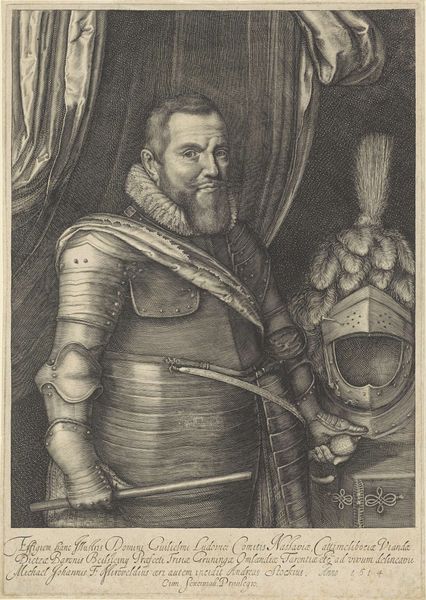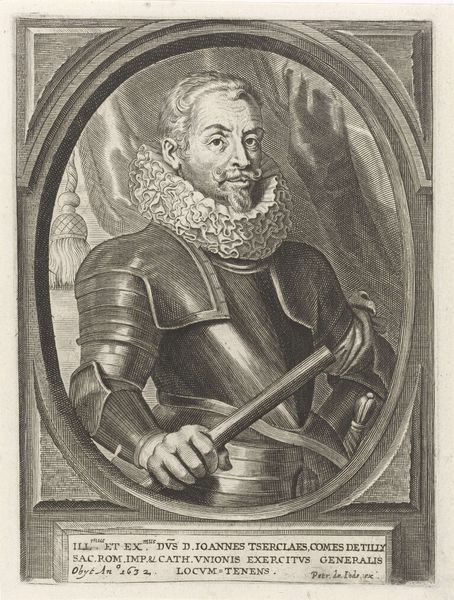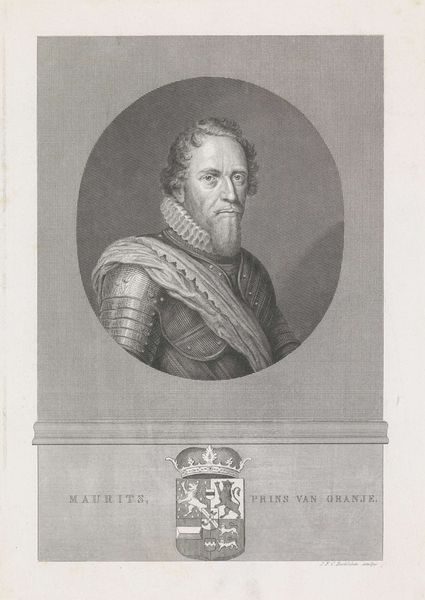
Portrait of Maurits (1567-1625), Prince of Orange c. 1607 - 1613
0:00
0:00
oil-paint
#
portrait
#
baroque
#
dutch-golden-age
#
oil-paint
#
oil painting
#
history-painting
#
realism
Dimensions: support height 111.8 cm, support width 84.4 cm, support thickness 1.8 cm, outer size depth 4 cm
Copyright: Rijks Museum: Open Domain
Editor: This is Michiel Jansz. van Mierevelt's "Portrait of Maurits, Prince of Orange," made with oil paints sometime between 1607 and 1613. It’s striking how much detail is focused on his armour, reflecting the light and really emphasizing its texture. What catches your eye in terms of the formal elements of the painting? Curator: Indeed. Notice the meticulous rendering of the textures—the glint of light on the armour contrasting sharply with the muted tones of his doublet and sash. Observe how the artist has employed chiaroscuro, manipulating light and shadow, to give volume to the figure, imbuing the surface with palpable realism. Are you seeing how the composition divides itself into distinct planes, with the foreground occupied by the Prince, set against a dark, almost indeterminate background, marked only by the heraldic shield? Editor: Yes, the dark background really makes the Prince stand out. But why that choice? Is it simply a way to focus the viewer’s attention? Curator: Possibly, but let’s not limit ourselves to mere iconography. The composition's formal qualities themselves carry meaning. The stark contrast might signify the weighty responsibilities he bears. The division foregrounds his figure, while the background, rendered indistinct, speaks to a world—or, perhaps, destiny—looming over him. It's a dialectic of the seen and unseen, the burden of leadership made visual. Notice also the verticality of the composition, drawing the eye upwards, contributing to a sense of stately authority and grandeur. Editor: I hadn’t considered the verticality before. Focusing on the lines and composition itself really does provide new insights! I was initially thinking about history and context, but now I appreciate the painting on a different level. Curator: Exactly! We find deeper truths when we examine how form shapes content and creates the work’s affect.
Comments
No comments
Be the first to comment and join the conversation on the ultimate creative platform.

